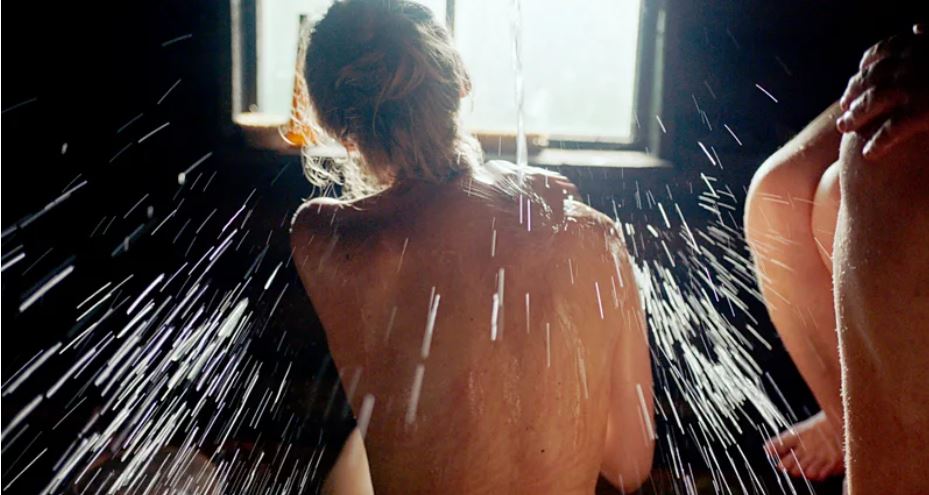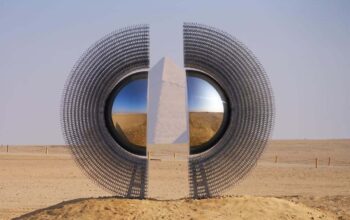The Nordic countries believe that having saunas is essential for physical and emotional wellbeing. Clare Dowdy explores saunas past and present to find out why.
With the rise in popularity of cold-water swimming, there’s now a renewed enthusiasm – even evangelical fanaticism – for the perfect counterpart to an icy outdoor dip, the hot, sweaty sauna. Across the Nordic region and beyond, new public and private saunas are opening, and existing saunas are overrun with visitors. And they’re even making it on to the big screen. Anna Hints’s Sundance Award-winning feature documentary Smoke Sauna Sisterhood follows a group of women in a traditional Estonian wood-fired smoke sauna.
These spaces come in all shapes and sizes, from the positively rustic to the deluxe and even high-tech.
The current sauna craze belies the fact that the sauna’s origins are thought to go back 10,000 years. Their first manifestation was as a pit sauna, literally a pit dug into the ground, with a pile of stones at the bottom, which was heated with a campfire. “Once the stones had warmed up, the pit was covered with wattle, thatch or peat, and then water was thrown on the stones, to create steam,” explains Dalva Lamminmäki, folklorist and doctoral researcher of sauna culture at the University of Eastern Finland.
Early sweat houses, dating back to the Bronze Age, are being unearthed all over the UK and Ireland. Saunas and sweat lodges were also prevalent in the ancient Islamic world as well as in the indigenous cultures of Mexico and North America. According to a study by Harvard University, the Native American tradition of the sweat lodge involved ceremonies and rituals, including “rites of preparation, prayer, and purification”. In Japan, “natural caves were used as sweat baths, and these evolved into bathhouses at temples and next to monasteries”, explains Emma O’Kelly in her book Sauna – The Power of Deep Heat.
O’Kelly writes that, “every culture, through every age, has enjoyed its own form of sweat bathing. From the Ottoman hammam and Mayan temazcal to the Japanese mushi-buro and kama-buro, from the banyas of Russia to the saunas of Finland, heat therapy has stood the test of time, waxing and waning in popularity, and crossing continents in various iterations”.
Many people these days treat a sauna as the latest addition to their suite of self-care practices – along with yoga, massage and facials – the perfect antidote to busy 21st-Century lifestyles.
The sauna was not just a building, it was liminal place and space between this world and the other world – Dalva Lamminmäki
However, in bygone centuries, their role went far beyond creating a sense of well-being and a place to relax. As well as a place to wash, they were used for cooking, drying flax and rye, making soap, doing the laundry, tending to the sick, washing the dead before burial, and giving birth, explains Lamminmäki. “The sauna was also a place to sleep and to meet someone in secret, and the role of weekly sauna was to cleanse people for church and the Sabbath, and to mark the change of one week to another,” she adds.
The sauna’s spiritual aspect was important. O’Kelly explains in her book that traditionally, the ancient Finns, like Native Americans, worshipped the four elements – air, water, fire, earth – in the sauna. “It was a microcosm of the three levels of the universe: the upper realm, the sky world; the middle realm, the Earth; and the underworld of the dead. All of its core symbolism replicated the cycles of growth, interconnection and symbiosis, with the end goal of altered states, raised consciousness and rejuvenation.”
“Sauna in Finland was an important part of folk healing,” Lamminmäki says, “It was sterile, warm and private, and people believed that it was ‘loaded’ with the power of ancestors and deities. Sauna was not just a building, it was liminal place and space between this world and the other world.”
Much of this sauna mythology appears in the Kalevala (Finland’s work of epic poetry) and Finnish runic songs. “The poem has created a lasting foundation for the sauna as a key symbol of Finnish identity,” O’Kelly writes, “and it’s not uncommon to see the gods and goddesses of the Kalevala carved into sauna doors and windows”.
In 1890 in Finland, folk healing was declared illegal, and speaking of spiritual or supernatural sauna practices became taboo









